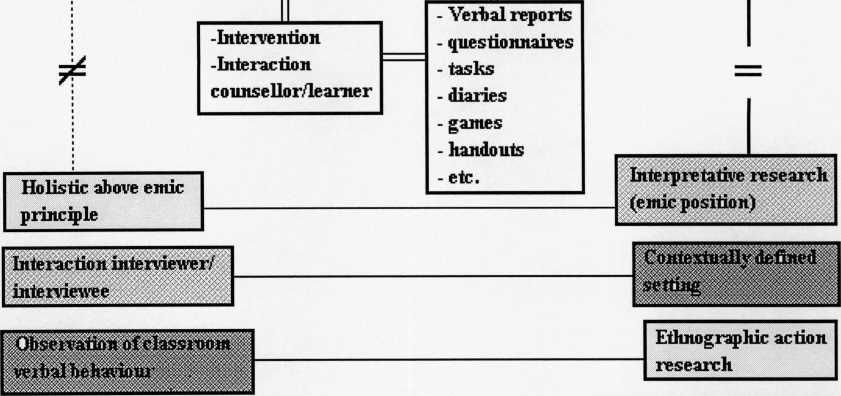........∣C OUTSELLING, TEACHING AND LEADING DIS CUS SIONS {.

Analysis and interpretation of
verbal behaviour
Analysis and interpretation
of second order systems
(reasons)

a research approach for
self-directed learning
Fig. 5.6 Comparison of ethnographic approaches
In the present project the main involvement with learners was through
counselling. Along with counselling, I also taught and led discussions (see Fig. 5.1), both
of which I considered insider tools for my research. I will discuss these three modes of
interaction in the following chapter. As the reader will have noticed from Figs. 5.5 and
5.6,1 utilised several types of resources, or research instruments, that, according to me,
were in accordance with the three modes of interaction mentioned above. In the next
section I would like to discuss the way I understand verbal reports, for these are one of
the most recurrent elements of my research.
5.2.3 VERBAL REPORTS
In order to analyse cognitive processes, several authors (Cohen: 1987, 1994,
Faerch and Kasper; 1987, Dechert; 1987, Haastrup; 1987 and others) have found that
what they generally call verbal reports (VR) are a very good way to obtain "valid and
141
More intriguing information
1. Handling the measurement error problem by means of panel data: Moment methods applied on firm data2. Restructuring of industrial economies in countries in transition: Experience of Ukraine
3. The name is absent
4. The name is absent
5. The name is absent
6. The name is absent
7. Indirect Effects of Pesticide Regulation and the Food Quality Protection Act
8. The name is absent
9. Natural hazard mitigation in Southern California
10. Yield curve analysis